
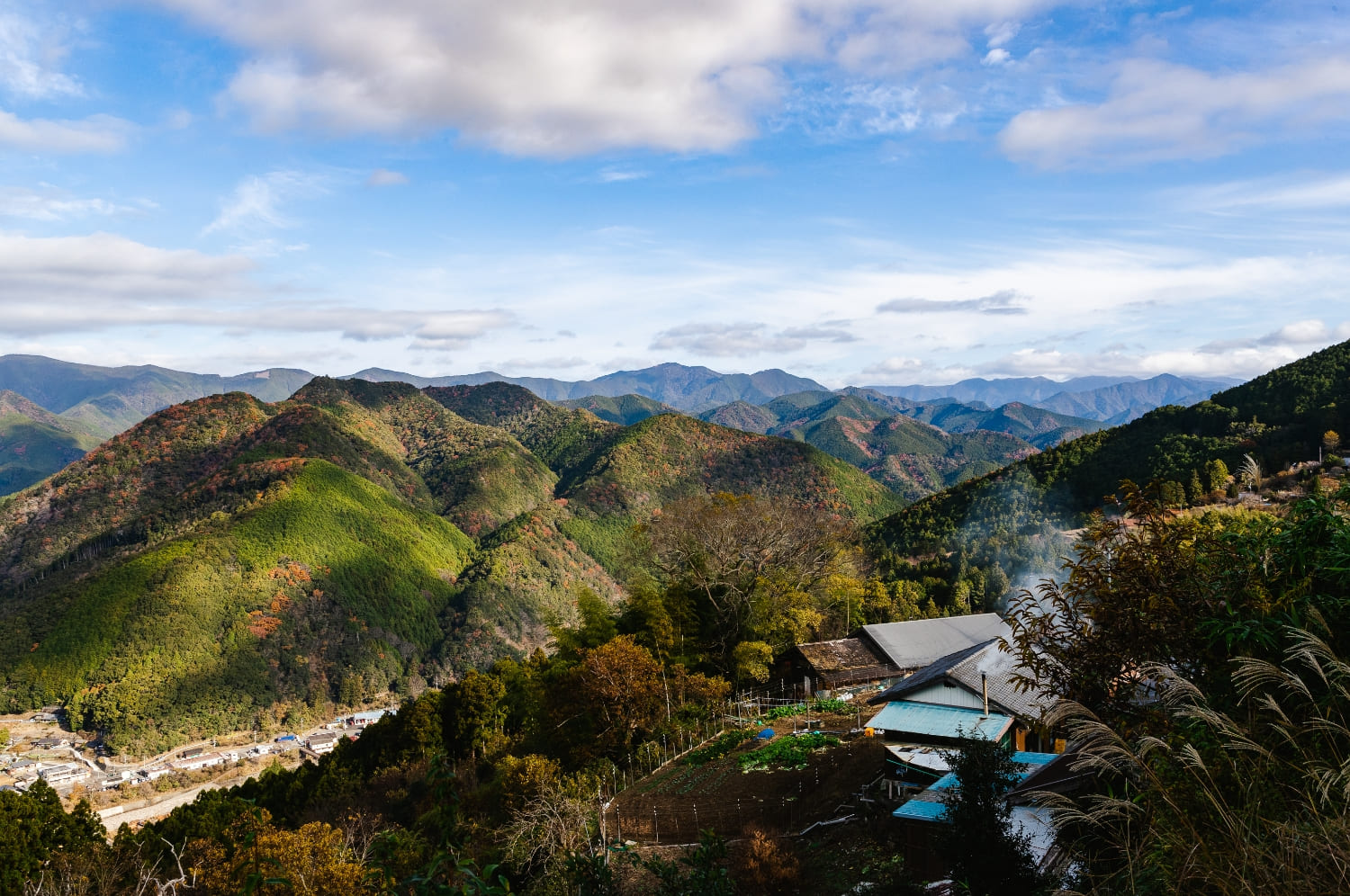
11 Best Places to Visit in Wakayama — Hot Springs, Kid-Friendly Spots, and Beyond!
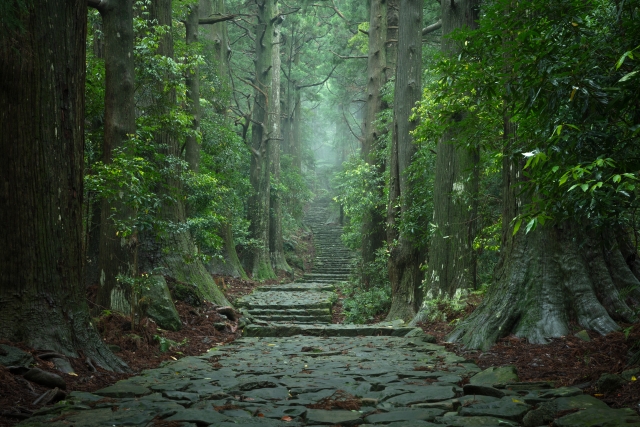
Wakayama has mountains, sea and rivers, making it the perfect place to enjoy the outdoors. Furthermore, mountain delicacies such as gibier, seafood such as tuna and fruits such as mandarin oranges are also very tasty, making it the perfect destination for gourmets.
In this issue, we introduce some of Wakayama’s specialities and famous spots! After reading this, you might want to go to Wakayama right away.
Translated with DeepL.com (free version)
What do you think of Wakayama? What are its specialities and places of interest?

Wakayama Prefecture stretches from north to south, and each area has its own unique specialties and character. Here, we’ll introduce some must-try local foods and must-see attractions that you shouldn’t miss when visiting Wakayama.
Local Cuisine and Specialties
Wakayama Prefecture is home to a variety of unique local dishes. Among the best-known are mehari-zushi, kakinoha-zushi (persimmon leaf sushi), saba narezushi (fermented mackerel sushi), and shojin ryori (Buddhist vegetarian cuisine).
Mehari-zushi gets its name from being so big that you have to open your eyes wide to eat it. It’s a large rice ball wrapped in salted takana (mustard greens).
Kakinoha-zushi was developed in inland areas of Wakayama, where fresh fish was once hard to obtain. Salted mackerel sushi is wrapped in persimmon leaves, which help preserve it and add a subtle aroma.
Saba narezushi, a specialty of the Arita and Hidaka regions, is a type of pressed sushi made with salted mackerel. It is a traditional fermented dish often prepared during the autumn festival season.
Shojin ryori is closely tied to Mount Koya, founded by Kobo Daishi (Kukai) over 1,200 years ago. The monks of Koya follow a vegetarian diet, with meals prepared entirely from plant-based ingredients, right down to the broth and seasonings.
Wakayama is also famous for its local ramen, known as chuka soba among locals. The soup comes in two main styles: a light, clear broth, or a rich, creamy tonkotsu-based broth.
Local Delicacies
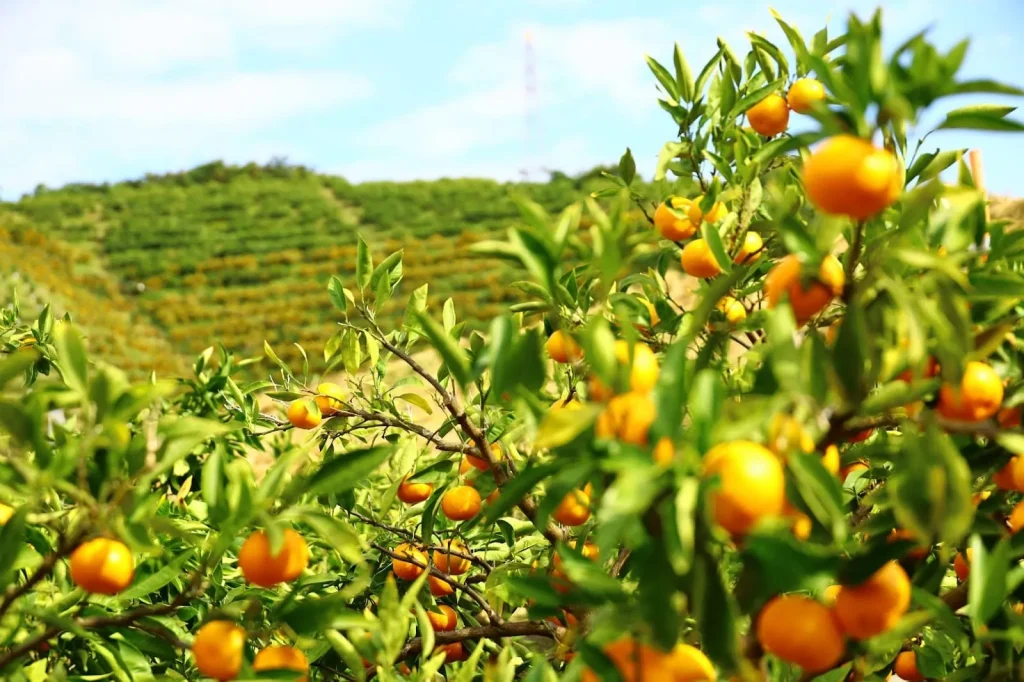
Many people immediately associate Wakayama with Kishu plums. The prefecture ranks first in Japan for both the size of its plum orchards and the volume of plums shipped. Minabe Town and Tanabe City are especially famous for their plum production.
Fruit cultivation is also thriving. Wakayama produces strawberries, mandarins, peaches, persimmons, and a unique citrus fruit called jabara. Kitayama Village is the only place in Japan where jabara is grown. Persimmons are often dried into anpo-gaki, a local delicacy.
Wakayama is equally renowned for its seafood. Nachikatsuura is famous for its tuna, while the prefecture also yields bonito, grouper (kue), whitebait (shirasu), cutlassfish, pike conger (hamo), and sea bream. Seasonal fish here are outstanding in flavor—whether grilled, simmered in hot pot, or enjoyed as sashimi.
Although Wakayama is often associated with seafood, it also boasts excellent meat. The most famous is Kumano beef, a breed raised in the Kumano region for generations. Rich in flavor, it’s best enjoyed as a juicy steak.
Wakayama is also well known for its game meat, particularly wild boar and venison. When properly processed, these meats are tender and free of gaminess. The prefecture has five certified facilities with strict hygiene standards and was the first in Japan to establish a grading system for game meat quality. This ensures that visitors can enjoy high-quality game with peace of mind. Each year from December to February, the Wakayama Gibier Festival is held, with restaurants and inns across the prefecture offering a variety of game dishes.
11 places to visit in Wakayama

Let’s take a look at some of the places you should visit if you come to Wakayama, by region.
Areas near Wakayama City
In the suburbs of Wakayama City, where JR Wakayama Station is located, there are many places where you can take your children and enjoy the whole day!
Amusement parks, fishing and tuna demolition shows!Wakayama Marina City
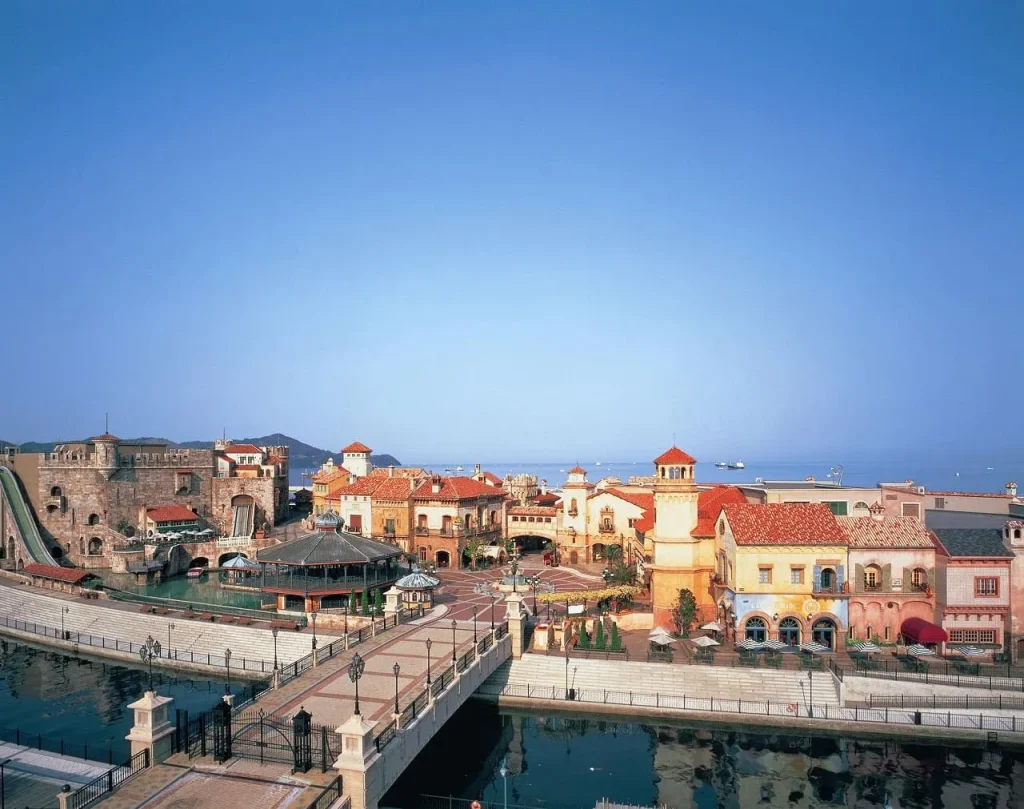
Wakayama Marina City is a resort island surrounded by the sea.It combines a theme park ‘Porto Europe’, a sea fishing park, a natural hot spring and a resort hotel.
At Porto Europa, you can not only enjoy the classic amusement park activities such as carousels, water rides and trapeze rides, but you can also walk through streets reminiscent of medieval Europe.
The Sea Fishing Park, a ‘fishing seawall’ on a 570 m long breakwater, offers hand-free fishing.Staff can give you a lecture on how to fish, so beginners and children can enjoy fishing without any worries.
After spending time at the theme parks and fishing, you can fill your stomach at the in-house Kuroshio Market barbecue, watch the daily tuna dismantling show or take your time choosing souvenirs.You can also relax at the Kishu Kuroshio Onsen and stay overnight at the Wakayama Marina City Hotel.You can enjoy a full day at Marina City alone.
Domicile
1527 Moumi, Wakayama-shi, Wakayama-ken 641-0014
Opening hours
10:00-17:00 on Saturdays and Sundays (varies by day).
Official website
https://www.marinacity.com/marinacity/
BBQ while watching the sunset at Kada Beach!
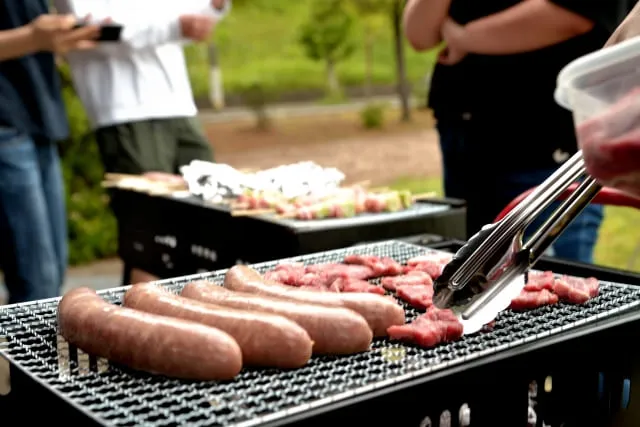
Kada Beach
Kada Beach is the only beach in Wakayama Prefecture where you can enjoy BBQs right on the sand, and it’s available year-round. It’s also popular for camping, as tents are allowed for overnight stays.
One of Kada Beach’s biggest highlights is its breathtaking sunset, which has been selected as one of the “100 Best Sunsets in Japan.”
During the summer swimming season, you can enjoy banana boat rides, glamping facilities, and other seaside activities. Regular events such as sunset yoga are also held, making the beach even more enjoyable.
Address:
〒640-0103 Kada, Wakayama City, Wakayama Prefecture
Office opening hours
9:00~17:00
Official website
Feel the world of Laputa|Tomogashima
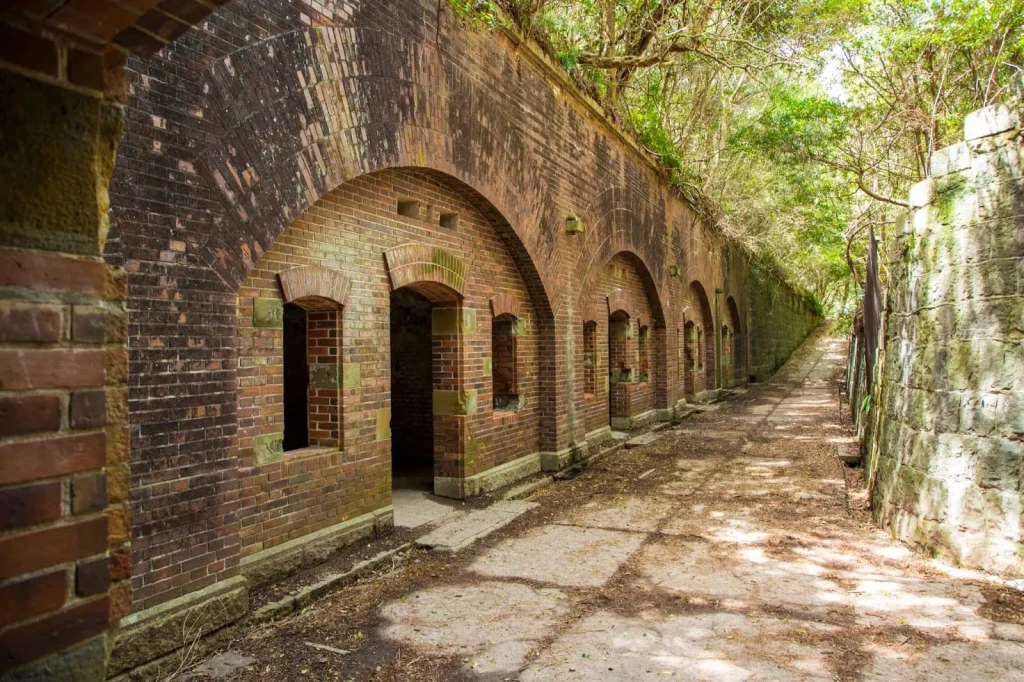
Tomogashima is a group of islands in the Seto Inland Sea (including Jinojima, Torashima, Kamijima, and Okinoshima) that together form part of a national park. The islands are dotted with fascinating sights, such as the remains of gun batteries used up until World War II, a lighthouse built during the Meiji era, and an observatory with sweeping views all the way to Shikoku.
Tomogashima is also famous for its rare plants, with around 400 species of wetland flora found here, making it a paradise for both history buffs and nature lovers. In recent years, it has also gained popularity as a spot where you can experience the atmosphere of the Studio Ghibli film Castle in the Sky (Laputa).
Access is easy from Kada Port, where a ferry to Tomogashima departs regularly. The ride takes about 20 minutes.
Address
〒640-0102 Fukayama,H Wakayama City, Wakayama Prefecture
Opening hours
9:00-16:30 (Tomogashima Steamship operating hours).
Official website
Kumano area
There are many places where you can feel the ancient Kumano faith in the Kumano region.
Walking the World Heritage Sites|Kumano Kodo and Kumano Sanzan
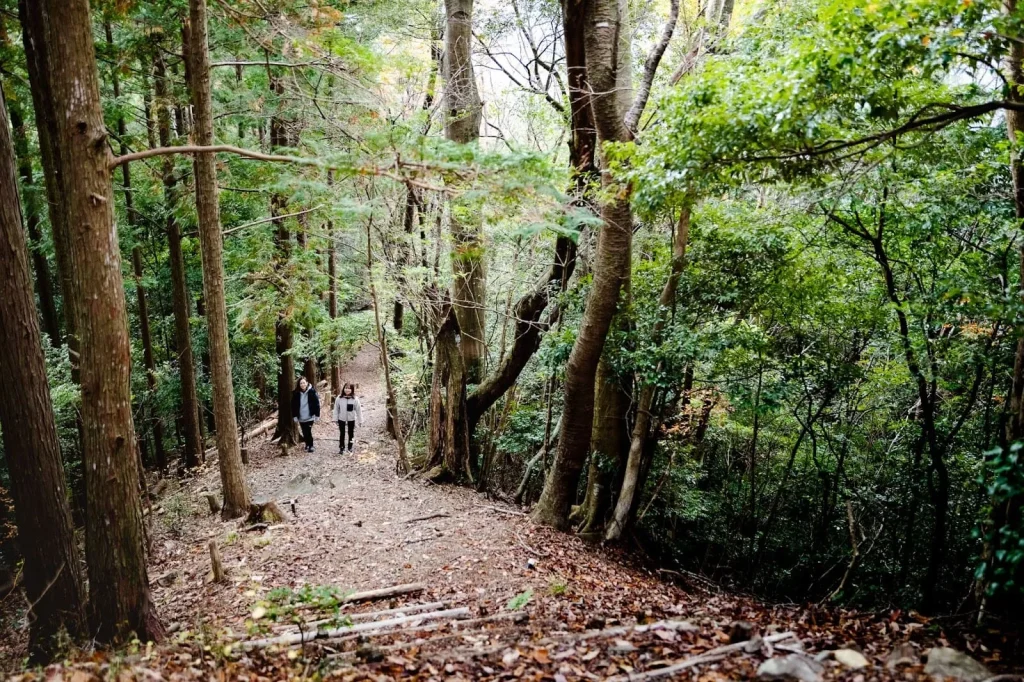
The Kumano Kodo, designated as a UNESCO World Heritage Site in 2004, is an ancient network of pilgrimage routes leading to the Kumano Sanzan—the three grand shrines of Kumano Hongu Taisha, Kumano Nachi Taisha, and Kumano Hayatama Taisha in Wakayama Prefecture.
This pilgrimage, known as the Kumano Pilgrimage, has been revered for centuries and continues to draw visitors today as a sacred spiritual destination. Along the trails, rivers, waterfalls, and massive rock formations are believed to embody the presence of deities, reflecting the area’s roots in nature worship. For this reason, the Kumano Kodo is also called the “Land of Rebirth.”
The routes vary from short walks that take only a few hours to multi-day journeys across the mountains. In recent years, the Kumano Kodo has also gained popularity as a retreat, offering travelers the chance to reconnect with nature and walk in peace. Whether you choose a path based on your fitness level or the time you have available, you will find unique accommodations and relaxing hot springs along the way.
Addresses of the Kumano Sanzan Shrines
Kumano Hongu Taisha
1110 Hongu, Hongu-cho, Tanabe City, Wakayama 647-1731, Japan
Kumano Nachi Taisha
1 Nachisan, Nachi-Katsuura Town, Higashimuro District, Wakayama 649-5301, Japan
Kumano Hayatama Taisha
1 Shingu, Shingu City, Wakayama 647-0081, Japan
Opening hours
Kumano Hongu Taisha shrine: 8am-5pm.
Kumano Nachi Taisya: 7am – 4:30pm.
Kumano Hayatama-taisha shrine: 8am-5pm.
Official website
Kumano Hongu Taisha shrine:http://www.hongutaisha.jp/
Kumano Nachi Taisha:https://kumanonachitaisha.or.jp/
Kumano Sotama Taisha:https://kumanohayatama.jp/
The River Pilgrimage Route – Kumano River Boat Tour
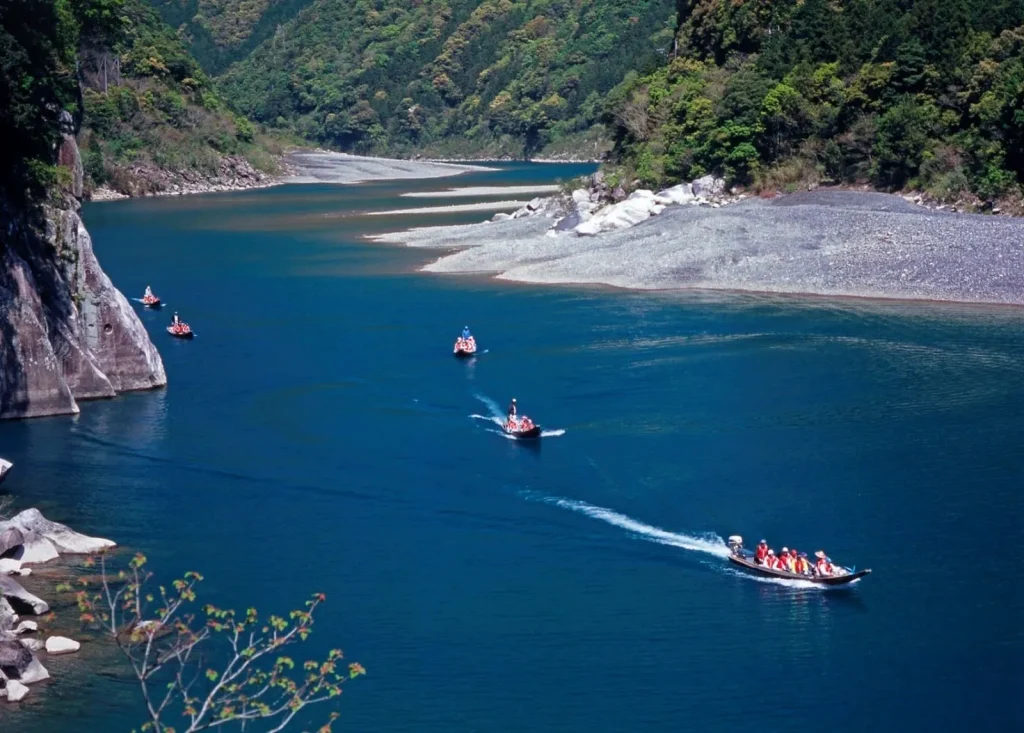
In fact, the Kumano Kodo, which I mentioned earlier, also includes a pilgrimage route along the river by boat. Even today, you can take a ride on a traditional wooden boat and relive the experience of a Heian-period pilgrimage.
Departing from Michi-no-Eki Dorokyo Kaido Kumanogawa (Roadside Station), the journey takes you past a series of waterfalls such as Nunobiki Falls and Jawarada Falls, as well as striking rock formations shaped by nature. You’ll even land on Honejima (Bone Island) for a short break. Along the way, you’ll hear stories from a local guide, accompanied by the sound of a flute, and visit places steeped in legend such as Hirujima (Noon Island), where it is said that the sun goddess Amaterasu once played Go with Kumano Gongen.
This is a rare opportunity to enjoy a mystical side of the Kumano Kodo that cannot be seen from land.
Kumano River boat boarding address.
54-8, Tancho, Kumanogawa-cho, Shingu, Wakayama
Opening hours
9:00-17:00
Official website
Koyasan area
Koyasan, founded over 1,200 years ago by Kobo Daishi (Kukai), is located in Wakayama Prefecture. Here are some of the highlights and ways to enjoy your time in the Koyasan area.
The whole mountain is a temple|Koyasan

Koyasan was founded by Kobo Daishi (Kukai) at the beginning of the Heian period. While Kongobuji Temple is the most famous landmark, the entire mountain is regarded as a single temple complex.
Among its many sacred sites, the two most important are Danjo Garan and Okunoin. Danjo Garan was the first area developed by Kobo Daishi and became the central training ground for Shingon Esoteric Buddhism. Within its grounds stand the striking Konpon Daito Pagoda and the Kondo Hall.
Okunoin is where Kobo Daishi is said to have entered deep meditation to attain enlightenment. His mausoleum, the Gobyo, is the most sacred site of Kobo Daishi worship and an essential stop for anyone visiting Koyasan.
Today, Koyasan has more than 50 shukubo—traditional temple lodgings once reserved for monks and pilgrims, now open to the public. Staying overnight allows visitors to experience temple culture firsthand, with vegetarian shojin ryori meals and beautifully landscaped temple gardens.
For those exploring further, the Kumano Kodo’s Kohechi route links Mt. Koya with Kumano Hongu Taisha. If you have the chance, consider staying overnight at a shukubo on Mt. Koya before continuing your pilgrimage along the Kumano Kodo.
Address
〒648-0294 Koyasan, Koyamachi, Ito-gun, Wakayama
Opening hours
8:30-17:00
Official website
Fun for children in the Karakuri Room|Kutoyama Sanada Museum, Kutoyama, Japan

This museum was established to preserve and share the story of three generations of the Sanada family—grandfather Masayuki, son Yukimura, and grandson Daisuke—for future generations. Masayuki was a military commander of Ueda Castle in Shinano Province (present-day Ueda City, Nagano Prefecture). Kudoyama, however, is where Yukimura spent most of his life and where Daisuke was born, making it the ideal location for this museum.
Inside, the exhibits are organized chronologically, and special themed exhibitions are also held throughout the year. There is even a trick room modeled after the Sanada residence, allowing children as well as adults to enjoy a fun, immersive experience.
Address
〒648-0101 1452-4, Kutoyama, Kutoyama-cho, Ito-gun, Wakayama
opening hours
9:00-17:00 (closed on Mondays and Tuesdays).
Official website
https://www.kudoyama-kanko.jp/sanada/index.html
Arita and Hidaka area
We’ll introduce some recommended spots in Arita, famous for its mandarins, and in the Hidaka area, known for its specialty kue (longtooth grouper)!
100 best terraced rice paddies in Japan|Aragijima
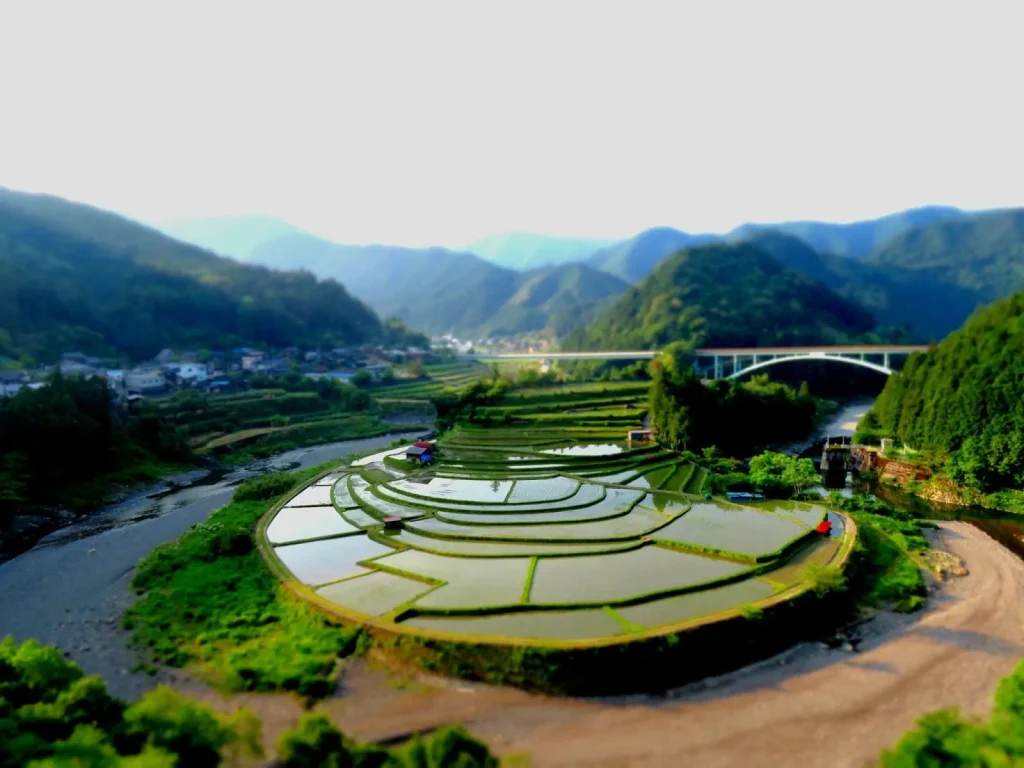
Designated as one of Japan’s Important Cultural Landscapes and selected among the “100 Best Terraced Rice Fields in Japan,” Aragi-jima is a stunning terraced rice field that transforms with each season.
In spring, the water-filled paddies glisten like mirrors; in summer, they turn lush green; in autumn, they glow with golden rice ears; and in winter, the fields are blanketed in pure white snow.
This is a must-visit spot to experience the breathtaking beauty of Japan’s four seasons.
Address
〒643-0521 Shimizu, Aridagawa-cho, Arida-gun, Wakayama
Official website
https://www.town.aridagawa.lg.jp/top/kakuka/kanaya/9/2/keikan/4718.html
Enjoy diving and camping!Shirasaki Marine Park
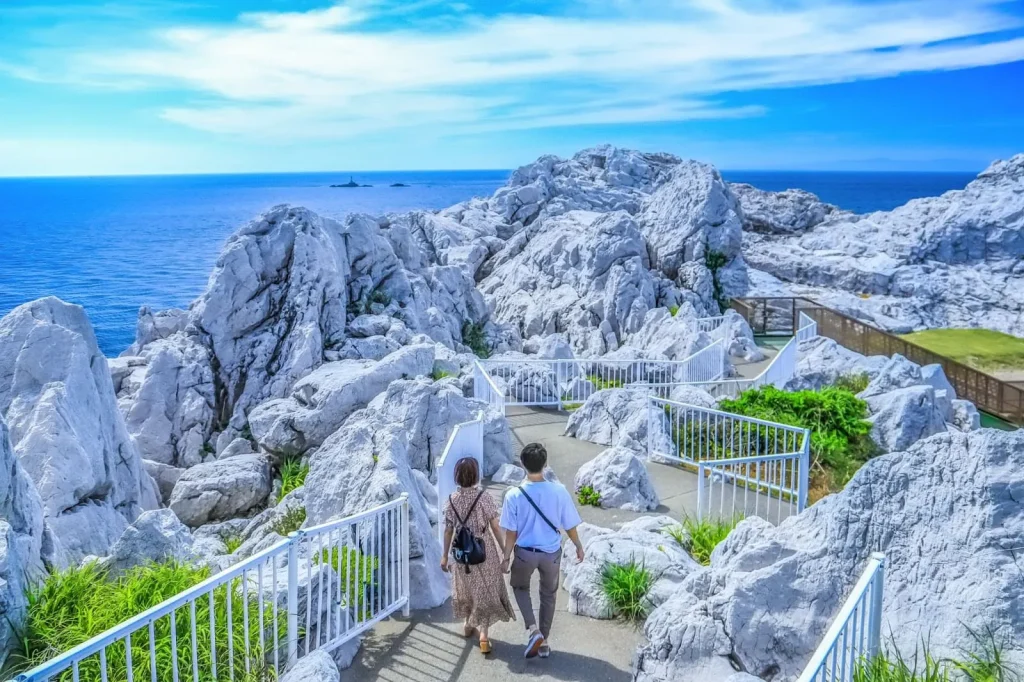
If you’re looking to enjoy the outdoors, head to Shirasaki Marine Park, where striking white limestone cliffs contrast beautifully with the deep blue sea. The entire park is set amidst rare limestone formations, creating a truly unique landscape.
The limestone here dates back about 250 million years to the Paleozoic Permian period. Fossils of Fusulina and crinoids (sea lilies) can still be found, adding to the park’s geological significance.
Address
960-1, Oaza Oobiki, Yura-cho, Hidaka-gun, Wakayama
Opening hours
8:30-17:15 (closed during the year-end and New Year holidays).
*Camping must be booked in advance by calling 0738-65-0655.
Official website
Shirahama and Kushimoto area
The Shirahama and Kushimoto area, with its sea, rivers, hot springs and facilities, is introduced here.
Meet the panda parents and their children!Adventure World
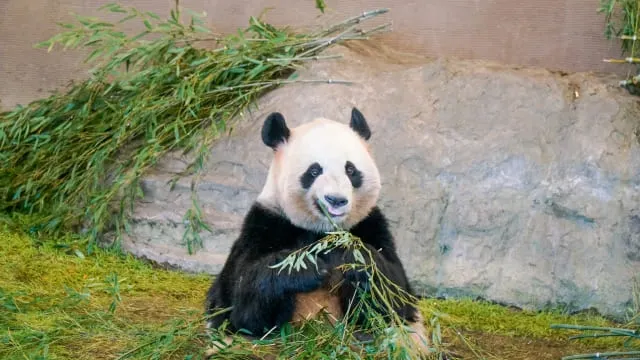
Adventure World, located in Shirahama Town, is a unique theme park that combines Safari World, Marine World, and an amusement park with both indoor and outdoor attractions.
The park is home to around 1,400 animals representing 140 species.
Unlike ordinary zoos, Adventure World offers unique experiences like the Walking Safari, where visitors can get up close to the animals, and lively animal parades. There are even special wedding packages that let animal-loving couples celebrate their big day in a truly unforgettable way.
The play zone also features family-friendly rides like roller coasters and merry-go-rounds, ensuring fun for visitors of all ages.
Address
〒649-2201 2399 Kata, Shirahama-cho, Nishimuro-gun, Wakayama Prefecture
Opening hours
10:00-17:00.
Official website
The Waikiki of Japan: Shirahama Beach
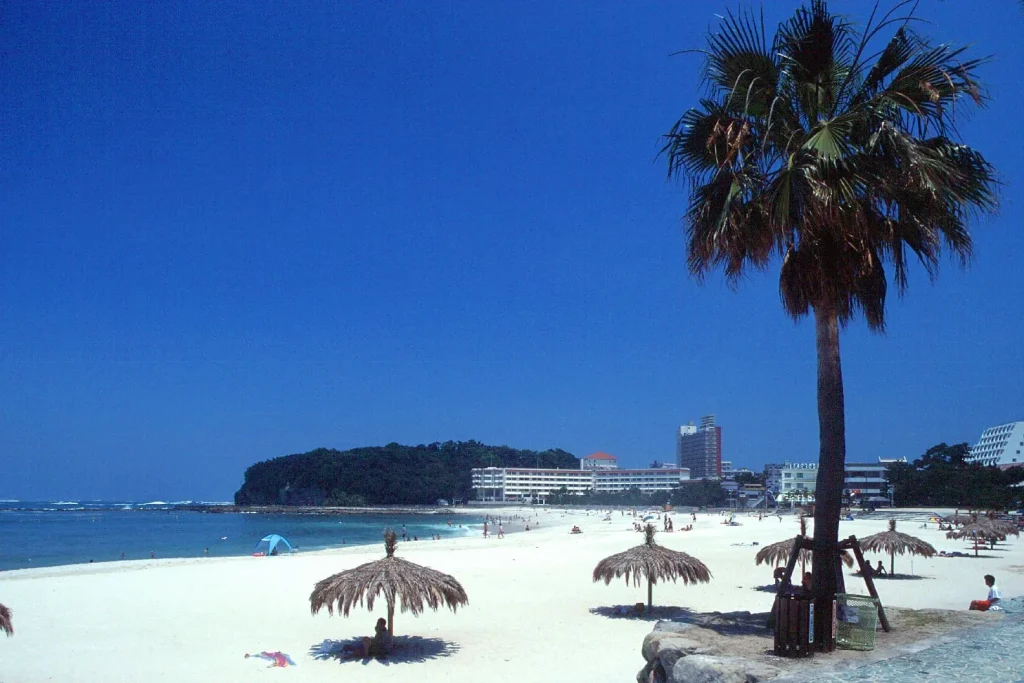
The last spot we’d like to introduce is Shirarahama Beach, from which the town of Shirahama takes its name. This stunning beach is officially a sister beach of Waikiki in Hawaii and has also been selected as one of Japan’s Top 100 Beaches.
Stretching for about 620 meters, its pure white sand contrasts beautifully with the deep blue sea and rows of palm trees. If you want to enjoy a tropical summer without leaving Japan, Shirarahama is the place to be.
The surrounding area is filled with hotels and resorts, making it an ideal destination for an extended vacation.
Address
〒649-2211 Shirahama-cho, Nishimuro-gun, Wakayama Prefecture
Official website
http://www.town.shirahama.wakayama.jp/kanko/midokoro/1454401113276.html









